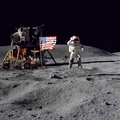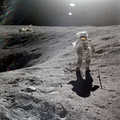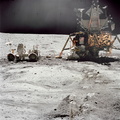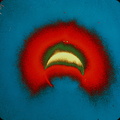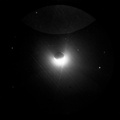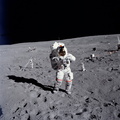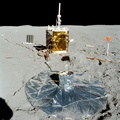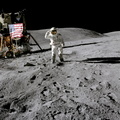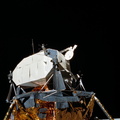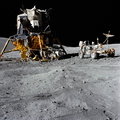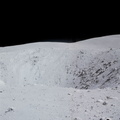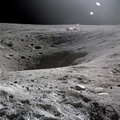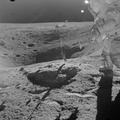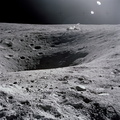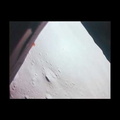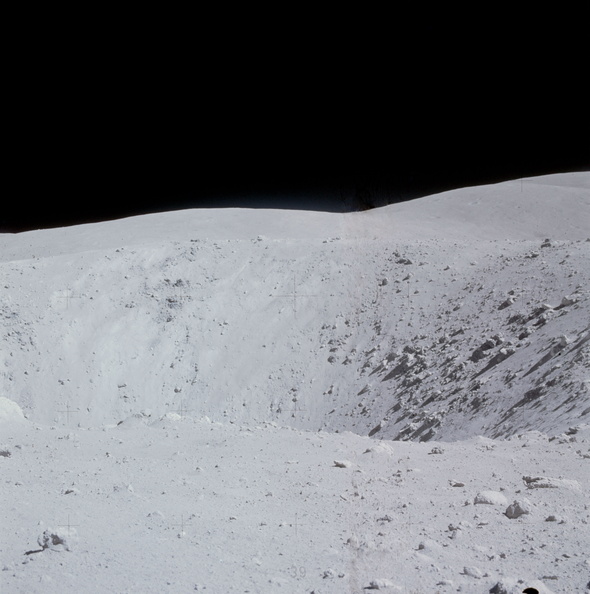
WIKIARCHIVES.SPACE
The Human Spaceflight Archive

Information
- Taken in
- Moon Surface
- Author
- NASA
- Description
- A close-up view of Buster Crater, which was visited by the two moon-exploring crew men of the Apollo 16 lunar landing mission, during the first extravehicular activity (EVA), April 21, 1972. Astronaut Charles M. Duke Jr. said the crater appeared to be larger than 50 meters, and he called it a very spectacular crater. This was the second stop for astronauts John W. Young and Duke on the mission's first EVA. Young exposed this view with his 70mm Hasselblad camera. While astronauts Young, commander; and Duke, lunar module pilot; descended in the Apollo 16 Lunar Module (LM) "Orion" to explore the Descartes highlands landing site on the moon, astronaut Thomas K. Mattingly II, command module pilot, remained with the Command and Service Modules (CSM) "Casper" in lunar orbit.
- Created on
- Friday 21 April 1972
- Albums
- US SPACE PROGRAM / APOLLO / APOLLO 16 / Mission Photos (Edited)
- Source link
- https://www.flickr.com/photos/nasa2explore/9611684750/in/album-72157634777006027/
- Visits
- 162
- Rating score
- no rate
- Rate this photo
- License
- Public Domain
- Modified by WikiArchives
- No (original)
- Downloads
- 1
Powered by Piwigo
